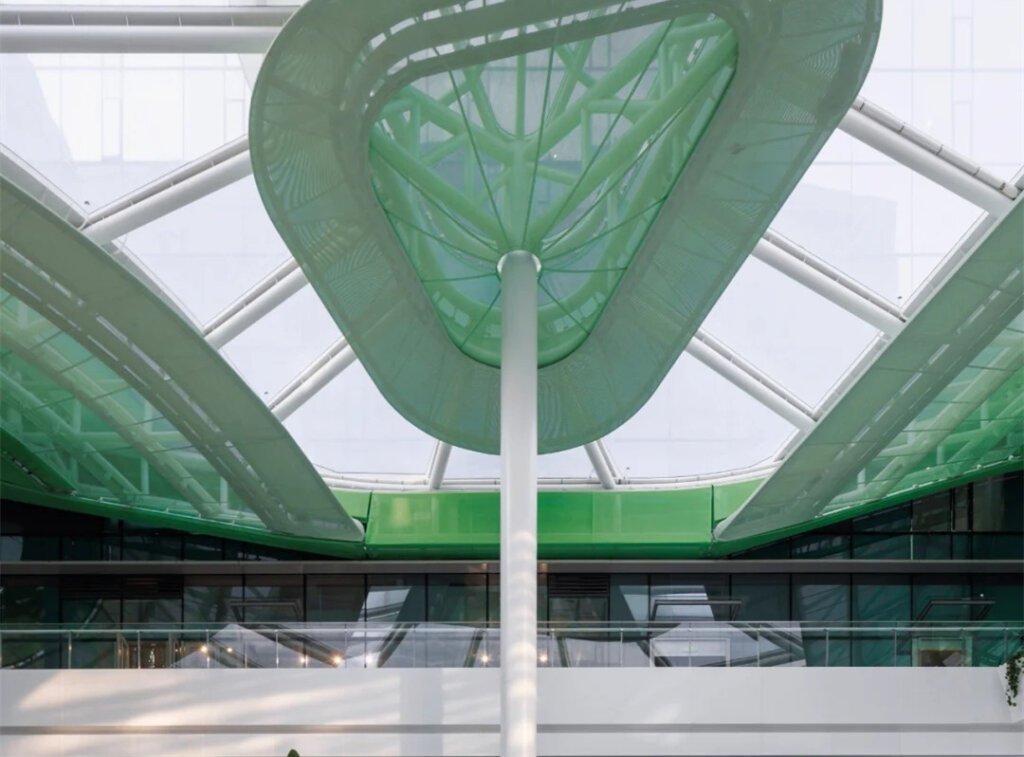In the field of architectural design, one type of structure is highly favored for its unique combination of a supportive “skeleton” and a soft, enveloping “skin” – and that is the PTFE membrane. Thanks to its exceptional properties and aesthetic appeal, PTFE membrane structures have become a highlight in modern architectural design.
PTFE, or polytetrafluoroethylene, also known as Teflon, is renowned as one of the most corrosion-resistant materials in the world, earning it the title “Plastic King.” The PTFE membrane employs some of the world’s finest glass fibers, which exhibit excellent resistance to folding and bending. The manufacturing, processing, and installation of PTFE membranes provide the utmost safety assurance for tensile membrane roofing applications.

These membranes hardly attract any dust – no known solid material adheres to their surface. When exposed to sunlight, the PTFE membrane absorbs ultraviolet light; as a result, the glass fibers gradually fade, and within 1 to 3 months the membrane turns white. This natural change helps maintain the roof’s aesthetic appeal over time.
Moreover, PTFE offers high chemical stability and outstanding resistance to chemical corrosion, enduring strong acids, strong bases, and potent oxidizing agents. It also boasts excellent heat, cold, and abrasion resistance, with an operational temperature range from –200°C to +250°C. PTFE’s superb electrical insulation is unaffected by temperature or frequency, and it is inherently non-stick, non-absorbent, and non-flammable.
For applications where the safety of a membrane roof is paramount, the allure of PTFE membrane materials lies in their high strength, durability, fire resistance, and self-cleaning properties, as well as their resistance to UV degradation. With a service life exceeding 25 years, PTFE membranes offer high light transmittance (around 13%) and a high thermal reflectance (73%), absorbing very little heat – attributes that enable a membrane roof to qualify as a permanent, modern building solution.
In practice, PTFE membranes are widely used as tensile membranes and structure membranes in various fabric structure projects. They are often combined with technologies such as prestressed membranes and pneumatically stressed membranes to further enhance the overall performance and safety of the structure.
